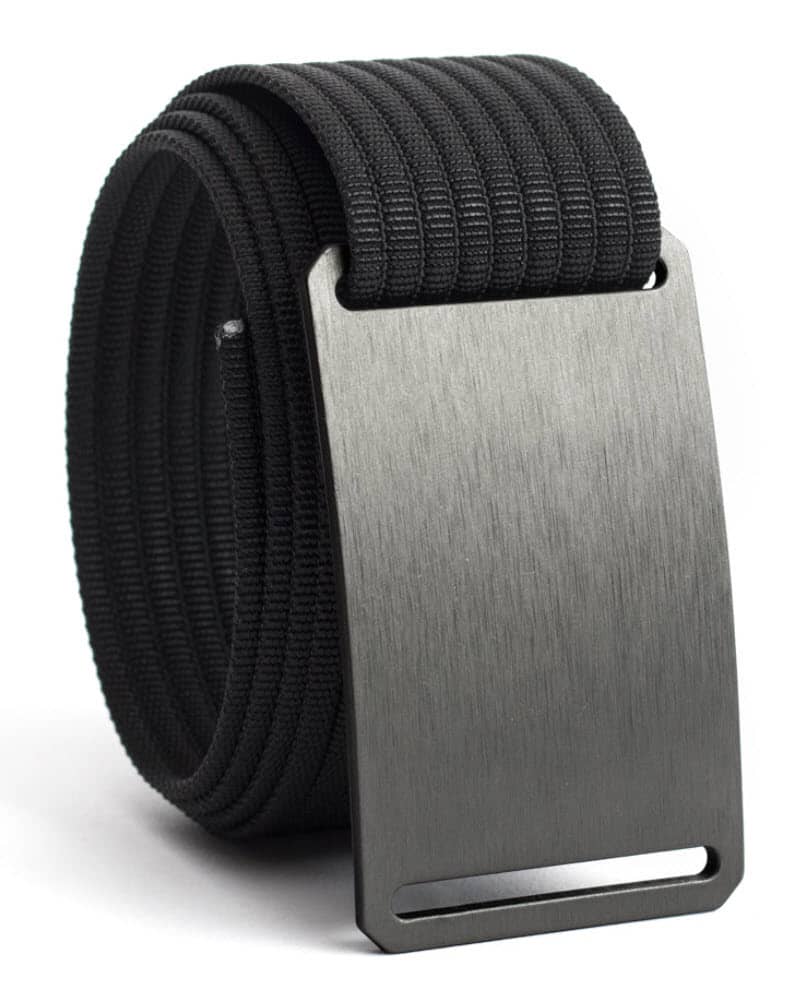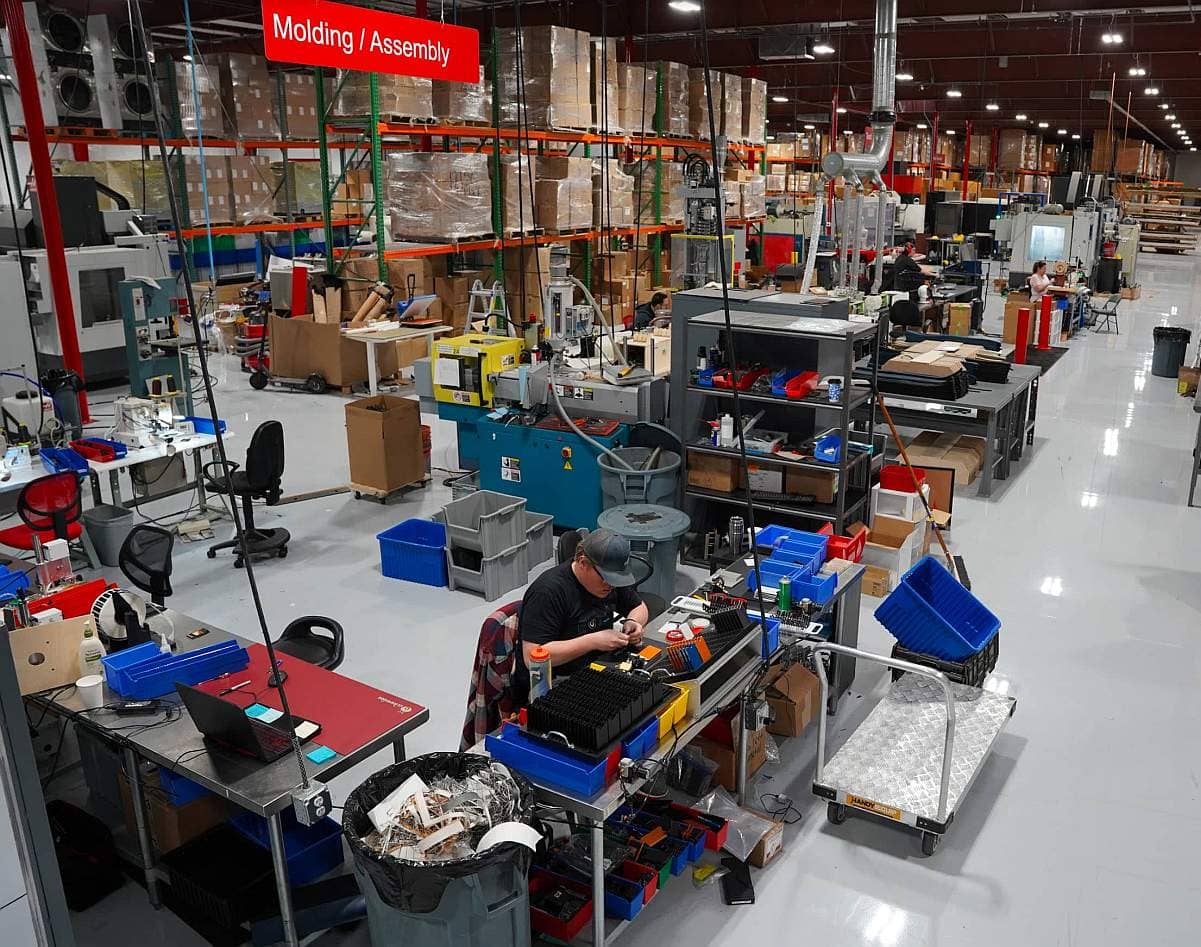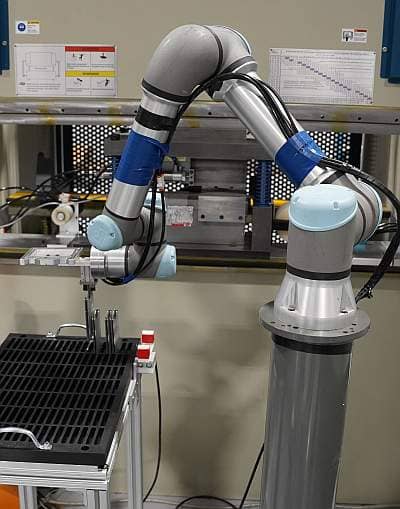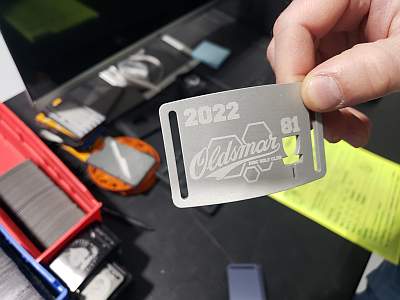

Midvale-based GRIP6 has a twofold mission: create high-quality, long-lasting products while strengthening the U.S. economy through domestic manufacturing and constant innovation. As BJ Minson, CEO and Founder, explains: “These are lofty goals, but we’re ready to roll up our sleeves and make it work. Almost nothing in retail stores has the ‘Made in the USA’ label. We’re proving how American businesses can stay competitive in a high-tech, global economy—right here in Utah”
With a current focus on belts, socks, and wallets, GRIP6 has built its model on utility-grade accessories with sleek, tech-y flourishes. Beyond the actual products, GRIP6 has also reimagined U.S. manufacturing, working to futureproof 3D printing and robotics in Utah’s innovation economy. We recently sat down with Minson to further discuss the history and mission of this small but growing line of U.S.-made products.
 “I’ve always been interested in manufacturing, but the specific idea for GRIP6 started when I was working on my Master’s degree in 2014,” says Minson. “As a mechanical engineer, I designed and made the first prototype myself: the GRIP6 belt. It’s basically a ‘no holes, no bulk’ belt with a patented lock system to keep it from sagging or loosening.”
“I’ve always been interested in manufacturing, but the specific idea for GRIP6 started when I was working on my Master’s degree in 2014,” says Minson. “As a mechanical engineer, I designed and made the first prototype myself: the GRIP6 belt. It’s basically a ‘no holes, no bulk’ belt with a patented lock system to keep it from sagging or loosening.”
 This concept of a simple, infinitely adjustable design took off organically; that same year, Minson was able to successfully launch a Kickstarter campaign, crowdsourcing enough funds to fulfill 10,000 orders.
This concept of a simple, infinitely adjustable design took off organically; that same year, Minson was able to successfully launch a Kickstarter campaign, crowdsourcing enough funds to fulfill 10,000 orders.
Minson’s initial idea was to use the funds to produce and deliver everything himself. “I had the motivation and the orders were in, but the logistics caught up quick,” he explains. “I figured I needed to partner with a manufacturer to meet my volume requirements.”
Hoping to produce the products domestically, Minson first looked to U.S.-based factories. “I was literally trying to give business to manufacturers, but they kept telling me to offshore it to their partners in China,” Minson recalls. “Everything I tested out was expensive and slow; no one was responding to my questions; and I just couldn’t get traction. When push came to shove, I was either going to lose money producing what I needed in the U.S.; go to China and hate myself for it; or rethink how to realistically produce everything myself in my garage.”
 Minson stuck to his original principle: Find a way to complete the first batch without going overseas. “It would be a huge undertaking, but I knew the long-haul math would work in my favor,” he explains. He set out by partnering with two business owners: David Burton, who contributed an industrial sewing machine in exchange for 10% ownership of GRIP6; and Winslow Burton, who would contribute “sweat equity” helping Minson in his garage. (The team was later joined by Kevin to help with creative and marketing collateral.)
Minson stuck to his original principle: Find a way to complete the first batch without going overseas. “It would be a huge undertaking, but I knew the long-haul math would work in my favor,” he explains. He set out by partnering with two business owners: David Burton, who contributed an industrial sewing machine in exchange for 10% ownership of GRIP6; and Winslow Burton, who would contribute “sweat equity” helping Minson in his garage. (The team was later joined by Kevin to help with creative and marketing collateral.)
“We went through six months of pure hell: tedious and manual labor in a cold garage, all while I was working a regular full-time job,” Minson recalls. “But we managed to deliver all 10,000 orders—to great feedback.”
Once they produced the first batch, Minson and Winslow set to work scaling the model for the next. As Minson explains, “We used funds left over from our Kickstarter to build a small website and centralize our operations to a factory in Midvale. Marketing was out of my wheelhouse, but we set our sights on Facebook advertising, customer testimonials, and word-of-mouth referrals.”
The social media ads proved to be a great startup tactic, because somewhere along the line, Jeff Bezos and team were influenced to purchase. The crew can be seen wearing GRIP6 belts for the inaugural Blue Origin voyage on July 20th, 2021. The sleek design appears perfect for space entry (and clearly unlike anything available through Amazon’s typical lineup).
 The team also designed two new products: wool socks and high-grade, super durable wallets in aluminum, steel, and carbon fiber. True to the GRIP6 mission, the products are made from domestically sourced raw materials, including many from right here in Utah.
The team also designed two new products: wool socks and high-grade, super durable wallets in aluminum, steel, and carbon fiber. True to the GRIP6 mission, the products are made from domestically sourced raw materials, including many from right here in Utah.
Also true to that mission: rethink the global manufacturing model.
“If smaller companies like GRIP6 can break up the current monopoly on wool manufacturing, we could pay farmers more and create a less expensive product,” says Minson. “As it stands, production runs a long, wasteful process of shipping, processing, and production over completely different parts of the world. It drives up pricing and takes power away from local manufacturers.”
 Minson goes on to explain how in the process of manufacturing locally, organizations can actually improve product quality. “When we hand off a product design to a manufacturer in China,” says Minson. “As they go on to manufacture over time, they’re trying to maintain their profit margin—increasing costs while cutting quality. When you’re designing and producing something in-house, you can build in your automation and quality control to stabilize costs and profits long-term.”
Minson goes on to explain how in the process of manufacturing locally, organizations can actually improve product quality. “When we hand off a product design to a manufacturer in China,” says Minson. “As they go on to manufacture over time, they’re trying to maintain their profit margin—increasing costs while cutting quality. When you’re designing and producing something in-house, you can build in your automation and quality control to stabilize costs and profits long-term.”
Minson uses the GRIP6 wallet as an example. It’s an elegant invention: a sleek case with a finger hold on the side; when the user triggers it, the cards pop out in a cascade pattern for easy access. “We designed a wallet and started making it, and quickly realized, “Holy cow, this is labor intensive.” No manufacturing company is going to help you troubleshoot that: They're not going to offer a redesign to facilitate cheaper labor; they're just going to state a price and move forward. But internally, we ask that question. “How do we bring the cost down?” Then we come up with new ideas and redesign it, and all of a sudden, it's 80% less expensive to manufacture on the labor side because of design changes.”
In sum, Minson explains, the system bars manufacturers from solving their own cost, supply chain, and logistical problems: reinforcing the very practices that keep them from competing in the global economy. As Minson puts it, “When companies outsource, quality goes down and price goes up over time. When you insource, your quality goes up and your price to manufacture goes down.”
 This is the ultimate “why” behind GRIP6, Minson explains: “We work hard to make things ourselves. We source U.S.-based materials, design our own custom tools and automation, and protect the independence and integrity of our systems. Bottom line, we believe it’s unwise to outsource too much manufacturing knowledge and ability. Staying competitive builds our spirit and vitality, for our economy today and for any generation to come.”
This is the ultimate “why” behind GRIP6, Minson explains: “We work hard to make things ourselves. We source U.S.-based materials, design our own custom tools and automation, and protect the independence and integrity of our systems. Bottom line, we believe it’s unwise to outsource too much manufacturing knowledge and ability. Staying competitive builds our spirit and vitality, for our economy today and for any generation to come.”
Looking ahead, the GRIP6 team is interested in growing their sales and marketing leadership and continuing to expand their product offerings. “We may be interested in partnering with other manufacturers to get new product ideas off the ground, particularly if they offer experience in sporting goods and 3D printing,” says Minson. “Our goal is to increase American manufacturing through a robust network of domestic partnerships. If you’re interested in that goal, please reach out.”
To connect with the GRIP6 team, shop their latest products, or explore how they could create custom logo-engraved items, visit GRIP6.com.

